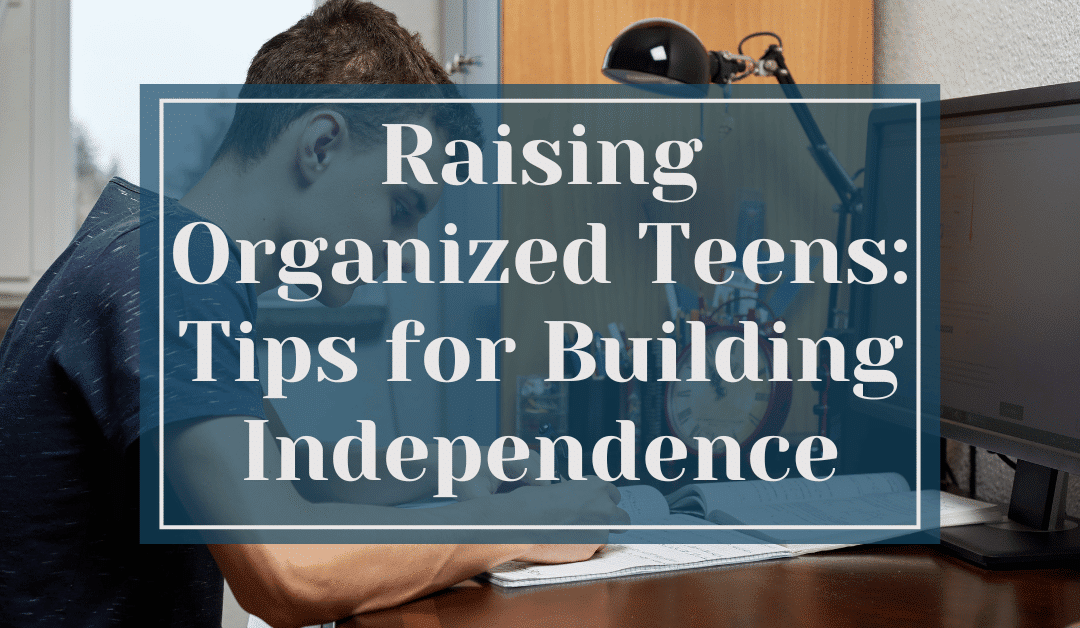As my kids get older, I’m learning that parenting teens is a balancing act. On one hand, you want to support them and keep things running smoothly. On the other, you know they need to learn how to manage their own time, belongings, and commitments.
Lately, I’ve been navigating this shift with my son, who just got his first part-time job. Along with the excitement came a pile of paperwork — direct deposit forms, schedules, and HR documents — all being sent directly to his email. My instinct is to hover and remind him constantly to make sure he doesn’t miss any important details, but I’m working on stepping back and trusting him to manage it. Instead of bugging him about every detail, I’ve told him that if he’s unsure, he can ask me for help. That way, he’s learning to take responsibility while still knowing I’m here as a safety net.
As much as I like to take control and know exactly what’s going on (since I’ve done so for so long), I’ve realized this is the perfect time to start letting them handle more for themselves and to guide them in learning how to stay organized on their own.
Step 1: Shift From Manager to Mentor
When our kids were younger, we had to manage ALL the details… from lunchboxes to library books. But now, as teens, they are ready for more independence. Letting go isn’t always easy for me – especially when I’m used to being the one who keeps everything on track (though I’ll admit, handing over lunch duty was a pretty easy win for me). Shifting into more of a mentor role, however, does take a little more effort, but it makes a huge difference.
Simple questions can help transfer the responsibility while keeping you connected:
-
“What do you need to bring with you tomorrow?”
-
“How will you remember to finish that project?”
For example, I’ve been encouraging my daughter to take ownership of her busy dance schedule. Now that she’s old enough, I ask her to check the studio portal for schedule updates, practice videos, etc. and also make sure that she’s packed her dance bag with water, snacks and the correct shoes needed for her classes. Instead of me tracking every detail, she’s learning to stay on top of it herself, with me available as backup if needed.
Step 2: Use Systems They Can Own
Organization tools only work if teens actually use them, and the goal is to help them find what works for them, not to force them to do it my way. Introduce options and let them choose:
-
Planners & notebooks for those who like to write things down.
-
Apps & digital calendars for teens glued to their phones. (We really like the Family Wall app)
-
Household launch pad (a designated spot for backpacks, dance bags, keys).
This could also look different for each child. My son is learning to manage the paperwork and emails tied to his new job, while my daughter relies on digital tools (dance portal) and our family calendar to stay on top of her dance activities. It doesn’t matter that their systems don’t look identical – what matters is that they’re the ones taking ownership.
Step 3: Set Clear Expectations
Here’s where the control piece shows up again (for me anyway). It’s easy to assume that if I let go, nothing will get done. But setting expectations helps bridge that gap. Teens still need boundaries; they just don’t need me to micromanage.
That means being clear about:
-
Homework and deadlines.
-
Chores and shared responsibilities.
-
Planning ahead for rides, activities, or supplies.
When expectations are clear, teens are less likely to lean on you as their default safety net.
Step 4: Let Natural Consequences Do the Teaching
It’s tempting to swoop in when your teen forgets something or to fix things before they fall apart. But sometimes the best teacher is a natural consequence. If they forget their homework, they’ll quickly realize why double-checking matters. If they don’t pack the right shoes for dance, they’ll be the ones scrambling in class.
Instead of rushing in to rescue them, I’m learning to take a breath and let the situation play out. It saves me from constantly running last-minute “rescue missions” – which, let’s be honest, aren’t much fun for anyone.
Step 5: Encourage Reflection and Reset Routines
At the end of each week, take a few minutes together to review what worked and what didn’t. This could be as simple as asking:
-
“What went smoothly this week?”
-
“What was stressful?”
-
“What could you try differently next time?”
This not only helps them problem-solve, but it also keeps me from slipping back into “control mode.” I’m not telling them what to change, I’m helping them figure it out for themselves.
Step 6: Balance Freedom with Guidance
Handing over responsibility doesn’t mean disappearing completely. Keep communication open and step in when needed, but give your teen room to succeed — and fail — on their own.
For me, that means biting my tongue sometimes, letting them stumble, and stepping in only when it’s truly needed. It’s a constant dance between giving freedom and offering guidance, but that’s where the real growth happens.
Final Thoughts
Helping your teen get organized isn’t about perfection — it’s about giving them the tools, space, and confidence to manage life on their own. For me, it looks like trusting my son to handle the paperwork that now lands in his inbox and encouraging my daughter to stay on top of her dance updates. By gradually stepping back, we prepare our teens for the next stage of independence, beyond high school, post-secondary, and life beyond our front door.


